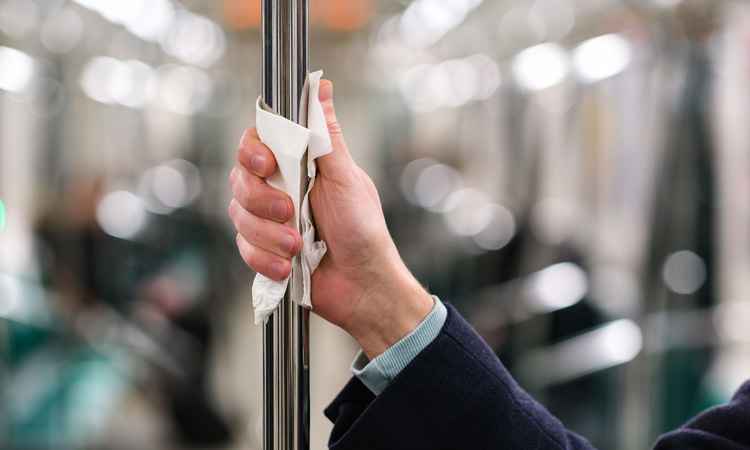Looking ahead to public transport post-pandemic
- Like
- Digg
- Del
- Tumblr
- VKontakte
- Buffer
- Love This
- Odnoklassniki
- Meneame
- Blogger
- Amazon
- Yahoo Mail
- Gmail
- AOL
- Newsvine
- HackerNews
- Evernote
- MySpace
- Mail.ru
- Viadeo
- Line
- Comments
- Yummly
- SMS
- Viber
- Telegram
- Subscribe
- Skype
- Facebook Messenger
- Kakao
- LiveJournal
- Yammer
- Edgar
- Fintel
- Mix
- Instapaper
- Copy Link
Posted: 4 June 2020 | Mohamed Mezghani - UITP | 1 comment
Within our first live COVID-19 briefing, Mohamed Mezghani, Secretary General at UITP, delivered the latest information on a number of areas for public transport and mobility professionals. Here, he answers some of the audience’s most pressing questions.


Will public transport ever be the same? How should transport operators manage this process back to ‘business as usual’?
Public transport will not be the same, it will be better. Despite the challenges, this crisis is coming with many opportunities. New practices in terms of cleaning and disinfection are here to stay. This will make public transport more attractive and safer to travel in.
In order to limit and manage crowds, the supply will be strengthened, and the service frequency augmented, offering a better and more regular service. Digitalisation will be deployed at faster pace, including apps to assist travellers plan their journeys, contactless ticketing, intelligent maintenance and operations, AI applications, etc. There are many opportunities to make public transport more people-focused and more efficient. But there will be a transition phase where governments will have to provide financial support to compensate the impacts of the crisis and where public transport operators will have to restore trust to welcome back passengers.
We should resist the temptation of short-term solutions in response to the present crisis that encourage people to leap back into their cars
When the crisis began, UITP focused on working with our global membership to see how operators, networks and authorities could best respond to a pandemic within the sector. Now, as movement begins to grow, we’re seeing what life can look like post-pandemic. One message that has started to resonate is the notion of coming back stronger. Build Back Better. We know that things may not return to the same as before, therefore this is an opportunity to create an even stronger sector by moving to better mobility for everyone. This can’t be done alone, of course, and we will all need to collaborate and share ideas.
As an industry, we have a huge challenge to convince governments to increase funding to cover the difference between reduced income from lower ridership and continuing (or even greater) operating costs. What are the arguments for this, beyond the usual assurance of basic mobility?
UITP has continued our engagement with political leaders and decision makers during this crisis, advocating for the continuity and survival of the public transport and local mobility services around the world. This is needed, not just to ensure basic mobility, but because a well-functioning local transportation network is vital for the economy, the society, and the environment.
We all have seen these empty streets and roads during the lockdown, and the huge space reserved for cars. We should resist the temptation of short-term solutions in response to the present crisis that encourage people to leap back into their cars. Car traffic nuisances in terms of air pollution (causing eight million premature deaths/year), greenhouse gas emissions, road accidents (with an annual 1.2 million death toll) and congestion have not disappeared with the crisis unfortunately. Also, we should not forget that the COVID-19 is a respiratory disease. According to the World Health Organization (WHO), poor air quality worsens the impact of the virus.
Public transport will not be the same, it will be better
It’s excellent to see people walking and biking more, so we now need to take the needed measures to make them do it safely and avoid an increase in car traffic. It’s the right time to consider congestion charging schemes and better manage parking in cities.
For example, initiatives such as Milan’s aim to introduce one of Europe’s most ambitious schemes to reallocate street space from cars to cycling and walking, besides public transport, in response to the COVID-19 crisis, should be encouraged and replicated.
The use of public funds in the recovery will be immense, and now is the time to make the right political decisions. Let me remind you that the economic benefits of public transport are five times greater than the money invested in it. Without clear conditions for using those funds in favour of a modal shift, we risk locking our cities in an unsustainable model of mobility for decades to come.
This webinar is available to watch on-demand. Find more information and register to watch here.
The Netherlands announced that there will be no required safety distance on public transport, but masks will be compulsory. Has UITP discussed this with health specialists, and do you think masks will become the norm long-term?
As lockdowns are eased and passengers return to public transport in greater numbers, the discussion over physical-distancing on board has grown. When fewer numbers of people were using their local public transport network, physical-distancing was almost automatic – people could freely stand apart from others at a safe distance. Now, as demand naturally increases, it’s necessary to take into account the difficulty of ensuring the compliance of physical distancing; in particular at peak times, as well as at modal exchange points.
COVID-19 has pushed the public transport industry to adopt new digital technologies to continue operation
Physical distancing and wearing of masks rules have been approached in different ways according to the country. As a matter of fact, the WHO recommends a distancing of one metre in stations, but not on-board vehicles. Italy, Spain and France have adopted the same value for distancing but make it compulsory in metros and buses too. In the Netherlands and Germany, distancing is 1.5 meters but is not imposed in public transport nor the wearing of masks, but recommended. In Japan, or China, physical distancing is not compulsory, but most people wear masks in public transport, though it is not imposed. This diversity of rules doesn’t make it easy to define a common approach for the sector to reassure passengers.
Imposing physical distancing in public transport vehicles means operating them using only 20 per cent of their capacity. It’s the equivalent of only eight to 10 passengers in a standard bus, or one person/m2 in a metro. How can passengers get on and off our vehicles maintaining this physical distance without causing disruption to schedules? Obviously, this is impossible to enforce with the resumption of the economic and social activities in cities.
Do you foresee 5G adoption happening quicker than expected due to the COVID-19 pandemic?
Digital technology is playing a significant role in reshaping the transport system entirely, including operation, maintenance and information. For the next level of automation, telecom communication, mainly 5G, will be the key to achieve the full benefits. 5G technology will be the backbone for the implementation of AI, IoT and autonomous solutions. Communication technology will enable the PTAs/ PTOs to get or transmit large amounts of data from the fleet and/or other infrastructure.
COVID-19 has pushed the public transport industry to adopt new digital technologies to continue operation, which may lead to faster adoption of 5G technologies. Public transport operators are adopting new measures like sensors, AI-enabled cameras, small robots and decentralised control centres etc. Further, some of the agencies are advocating for more autonomous vehicles to bring operational efficiency and flexibility. Thus, it is very obvious that there will be strong push for 5G technology.
However, there is also uncertainty in the market as many telecom companies are not rolling out their 5G infrastructure. Some companies are sceptical about the cost recovery under the current market situation. This may cause some setback to the rollout of 5G infrastructure in cities.
Interested to learn more? Intelligent Transport’s second LIVE COVID-19 briefing with UITP is being held on Monday 8 June at 14:00 BST. Sylvain Haon, Senior Director of Strategy at UITP, will be discussing the tech-led solutions that can help public transport and its associated infrastructure get back to business as usual after the pandemic. Find more information here.
Biography
Mohamed Mezghani has been Secretary General of UITP, the International Association of Public Transport, for two years, beginning in January 2018. He was appointed by the Policy Board in October 2017 in Barcelona, Spain. With decades of experience in public transport and urban mobility related fields, Mezghani worked at UITP as the Deputy Secretary General since 2014, and previously as the Knowledge Director and head of department.
Related topics
5G & Transport Communications, Air Quality, COVID-19, Infrastructure & Urban Planning, Intelligent Transport Systems (ITS), Public Transport, Sustainable Urban Transport, Transport Governance & Policy, Vehicle & Passenger Safety
Related organisations
International Association for Public Transport (UITP), World Health Organization (WHO)









Nice Tips! The coronavirus has had unprecedented impacts on the world — and the worst is yet to come. Companies must act today if they are to bounce back in the future. Doing so will help the world as a whole recover — and, we hope, become more resilient in the process.